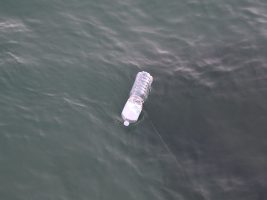
Today, 22 April, marks the 54th Earth Day, celebrated worldwide. The celebration of the Day was first observed in 1970, in the USA. It is meant to serve as a “reminder of the importance of environmental protection and sustainability, encouraging us to come together and take action for a healthier planet and a brighter future.” This year, in particular, the initiative focuses on an ambitious goal to be achieved over a number of years: to end the use of plastics for the benefit of human health and the planet. In practical terms,
this means a global commitment to demand a 60% reduction in the production of all plastics by 2040.
To achieve this, the organisers propose some intermediate steps: promoting widespread public awareness of the damage caused by plastic to human and animal health and to biodiversity as a whole; calling for more research into its health impacts, including disseminating all information on its effects to the public; rapidly phasing out all single-use plastics by 2030 and committing to ending plastic pollution and forging an international legally binding UN agreement by 2024; advocating policies that end the scourge of fast fashion and its reliance on vast quantities of plastic materials; investing in innovative technologies and materials to create a plastic-free world.
There is good reason for being alarmed, as Kathleen Rogers, president of Earth Day, points out: “The word environment means what surrounds you.
In the case of plastics, we have become the product itself – it flows through our bloodstream, adheres to our internal organs, and carries heavy metals known to cause cancer and disease.
Now what was once thought to be an amazing and useful product has become something else, and our health and that of all other living creatures hangs in the balance”.
The problem with plastics extends beyond a looming environmental issue. In fact, they pose a serious threat to human health that is as alarming as climate change. As plastics break down into microplastics, they release toxic chemicals into our food and water sources and circulate through the air we breathe.
For some perspective, more than 500 billion plastic bags were produced globally last year (1 million bags every minute!)
- Foto Calvarese/SIR
- Foto Calvarese/SIR
- Foto Calvarese/SIR
Many plastic bags have a “working life” of a few minutes, followed by an “afterlife” that can last for centuries. Even after plastics decompose, they remain as microplastics, tiny particles that penetrate every niche of life on the planet.
In the United States alone, 100 billion plastic beverage containers were sold last year (that’s more than 300 bottles per person). A few of them will be converted into park benches; none of them will be made into new plastic bottles, and 95% of all plastics in the US won’t be recycled at all. Even the 5% of plastics that are recycled are ‘downcycled’ into inferior products or shipped to poorer countries for ‘recycling’, leaving the demand for virgin plastic undiminished.
We also rarely think about the link between water and plastics. And yet
it takes six times as much water to make a plastic water bottle as the bottle itself!
And all of this is happening at a time when the production of plastics has increased to more than 380 million tonnes per year.
In short, there is ample reason to take this growing problem seriously and, by getting involved, to help raise the alarm sounded by this year’s Earth Day, so that the relevant international bodies take up the issue and implement countermeasures – primarily at the regulatory level – to combat it.












